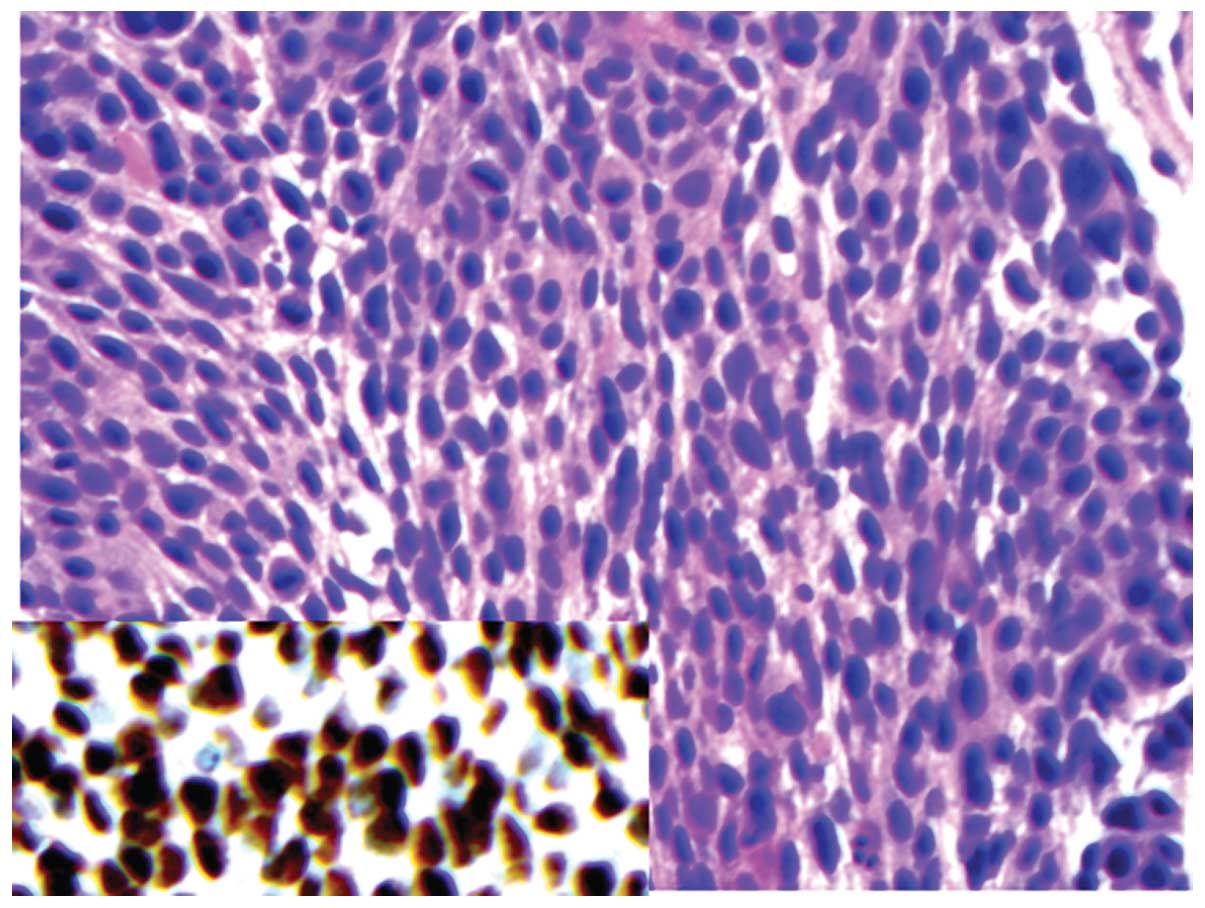|
1
|
Varela-Lema L, Fernández-Villar A and
Ruano-Ravina A: Effectiveness and safety of endobronchial
ultrasound-transbronchial needle aspiration: a systematic review.
Eur Respir J. 33:1156–1164. 2009. View Article : Google Scholar : PubMed/NCBI
|
|
2
|
Navani N, Lawrence DR, Kolvekar S, Hayward
M, McAsey D, Kocjan G, Falzon M, Capitanio A, Shaw P, Morris S,
Omar RZ and Janes SM: REMEDY Trial Investigators: Endobronchial
ultrasound-guided transbronchial needle aspiration prevents
mediastinoscopies in the diagnosis of isolated mediastinal
lymphadenopathy: a prospective trial. Am J Respir Crit Care Med.
186:255–260. 2012. View Article : Google Scholar
|
|
3
|
Oki M, Saka H, Kitagawa C, Kogure Y,
Murata N, Ichihara S and Moritani S: Prospective study of
endobronchial ultrasound-guided transbronchial needle aspiration of
lymph nodes versus transbronchial lung biopsy of lung tissue for
diagnosis of sarcoidosis. J Thorac Cardiovasc Surg. 143:1324–1329.
2012. View Article : Google Scholar
|
|
4
|
Gurioli C, Ravaglia C, Romagnoli M, Casoni
G, Tomassetti S, Nanni O and Poletti V: EBUS-TBNA in
mediastinal/hilar lymphadenopathies and/or masses: an Italian case
series. Clin Respir J. 6:3–8. 2012. View Article : Google Scholar : PubMed/NCBI
|
|
5
|
Delattre C, Fournier C, Bouchindhomme B,
Renaud F, Escande F, Ramon P and Copin MC: Endoscopic ultrasound
guided transbronchial fine needle aspiration: a French Department
of Pathology’s 4-year experience. J Clin Pathol. 64:1117–1122.
2011.PubMed/NCBI
|
|
6
|
Herth FJ, Eberhardt R, Vilmann P, Krasnik
M and Ernst A: Real-time endobronchial ultrasound guided
transbronchial needle aspiration for sampling mediastinal lymph
nodes. Thorax. 61:795–798. 2006. View Article : Google Scholar : PubMed/NCBI
|
|
7
|
Wallace MB, Pascual JM, Raimondo M,
Woodward TA, McComb BL, Crook JE, Johnson MM, Al-Haddad MA, Gross
SA, Pungpapong S, Hardee JN and Odell JA: Minimally invasive
endoscopic staging of suspected lung cancer. JAMA. 299:540–546.
2008. View Article : Google Scholar : PubMed/NCBI
|
|
8
|
Nayak A, Sugrue C, Koenig S, Wasserman PG,
Hoda S and Morgenstern NJ: Endobronchial ultrasound-guided
transbronchial needle aspirate (EBUS-TBNA): a proposal for on-site
adequacy criteria. Diagn Cytopathol. 40:128–137. 2012. View Article : Google Scholar : PubMed/NCBI
|
|
9
|
Groth SS, Whitson BA, D’Cunha J, Maddaus
MA, Alsharif M and Andrade RS: Endobronchial ultrasound-guided
fine-needle aspiration of mediastinal lymph nodes: a single
institution’s early learning curve. Ann Thorac Surg. 86:1104–1110.
2008.
|
|
10
|
Sun JY, Zhao H, Zhang J, Wang XD and Han
BH: First 30 endobronchial ultrasound-guided transbronchial needle
aspirations: a single institution’s early experience. Chin Med J
(Engl). 124:1818–1823. 2011.PubMed/NCBI
|
|
11
|
Lange TJ, Kunzendorf F, Pfeifer M, Arzt M
and Schulz C: Endobronchial ultrasound-guided transbronchial needle
aspiration in routine care - plenty of benign results and follow-up
tests. Int J Clin Pract. 66:438–445. 2012. View Article : Google Scholar
|
|
12
|
Sanz-Santos J, Andreo F, Serra P, Llatjós
M, Castellà E, Astudillo J, Monsó E and Ruiz-Manzano J: False
positive endobronchial ultrasound-guided real-time transbronchial
needle aspiration secondary to bronchial carcinoma in situ at the
point of puncture: a case report. J Cardiothorac Surg. 7:742012.
View Article : Google Scholar
|
|
13
|
Monaco SE, Pantanowitz L and Khalbuss WE:
Comparing endobronchial ultrasound-guided fine needle aspiration
specimens with and without rapid on-site evaluation. Cytojournal.
9:22012. View Article : Google Scholar : PubMed/NCBI
|
|
14
|
Huang CT, Tsai YJ, Liao WY, Wu PC, Ho CC,
Yu CJ and Yang PC: Endobronchial ultrasound-guided transbronchial
biopsy of peripheral pulmonary lesions: how many specimens are
necessary? Respiration. 84:128–134. 2012. View Article : Google Scholar
|
|
15
|
Lee BE, Kletsman E, Rutledge JR and Korst
RJ: Utility of endobronchial ultrasound-guided mediastinal lymph
node biopsy in patients with non-small cell lung cancer. J Thorac
Cardiovasc Surg. 143:585–590. 2012. View Article : Google Scholar : PubMed/NCBI
|
|
16
|
Vaughn AC: The impact of substance abuse
on the care of African Americans and Latinos with HIV/AIDS. J Natl
Med Assoc. 96(2 Suppl): 21S–23S. 2004.PubMed/NCBI
|
|
17
|
Shigematsu H, Lin L, Takahashi T, Nomura
M, Suzuki M, Wistuba II, Fong KM, Lee H, Toyooka S, Shimizu N,
Fujisawa T, Feng Z, Roth JA, Herz J, Minna JD and Gazdar AF:
Clinical and biological features associated with epidermal growth
factor receptor gene mutations in lung cancers. J Natl Cancer Inst.
97:339–346. 2005. View Article : Google Scholar : PubMed/NCBI
|
|
18
|
Scagliotti GV, Parikh P, von Pawel J,
Biesma B, Vansteenkiste J, Manegold C, Serwatowski P, Gatzemeier U,
Digumarti R, Zukin M, Lee JS, Mellemgaard A, Park K, Patil S,
Rolski J, Goksel T, de Marinis F, Simms L, Sugarman KP and Gandara
D: Phase III study comparing cisplatin plus gemcitabine with
cisplatin plus pemetrexed in chemotherapy-naive patients with
advanced-stage non-small-cell lung cancer. J Clin Oncol.
26:3543–3551. 2008. View Article : Google Scholar
|
|
19
|
Kwak EL, Bang YJ, Camidge DR, Shaw AT,
Solomon B, Maki RG, Ou SH, Dezube BJ, Jänne PA, Costa DB,
Varella-Garcia M, Kim WH, Lynch TJ, Fidias P, Stubbs H, Engelman
JA, Sequist LV, Tan W, Gandhi L, Mino-Kenudson M, Wei GC, Shreeve
SM, Ratain MJ, Settleman J, Christensen JG, Haber DA, Wilner K,
Salgia R, Shapiro GI, Clark JW and Iafrate AJ: Anaplastic lymphoma
kinase inhibition in non-small-cell lung cancer. N Engl J Med.
363:1693–1703. 2010. View Article : Google Scholar : PubMed/NCBI
|
|
20
|
Mukhopadhyay S: Utility of small biopsies
for diagnosis of lung nodules: doing more with less. Mod Pathol.
25(Suppl 1): S43–S57. 2012. View Article : Google Scholar : PubMed/NCBI
|












